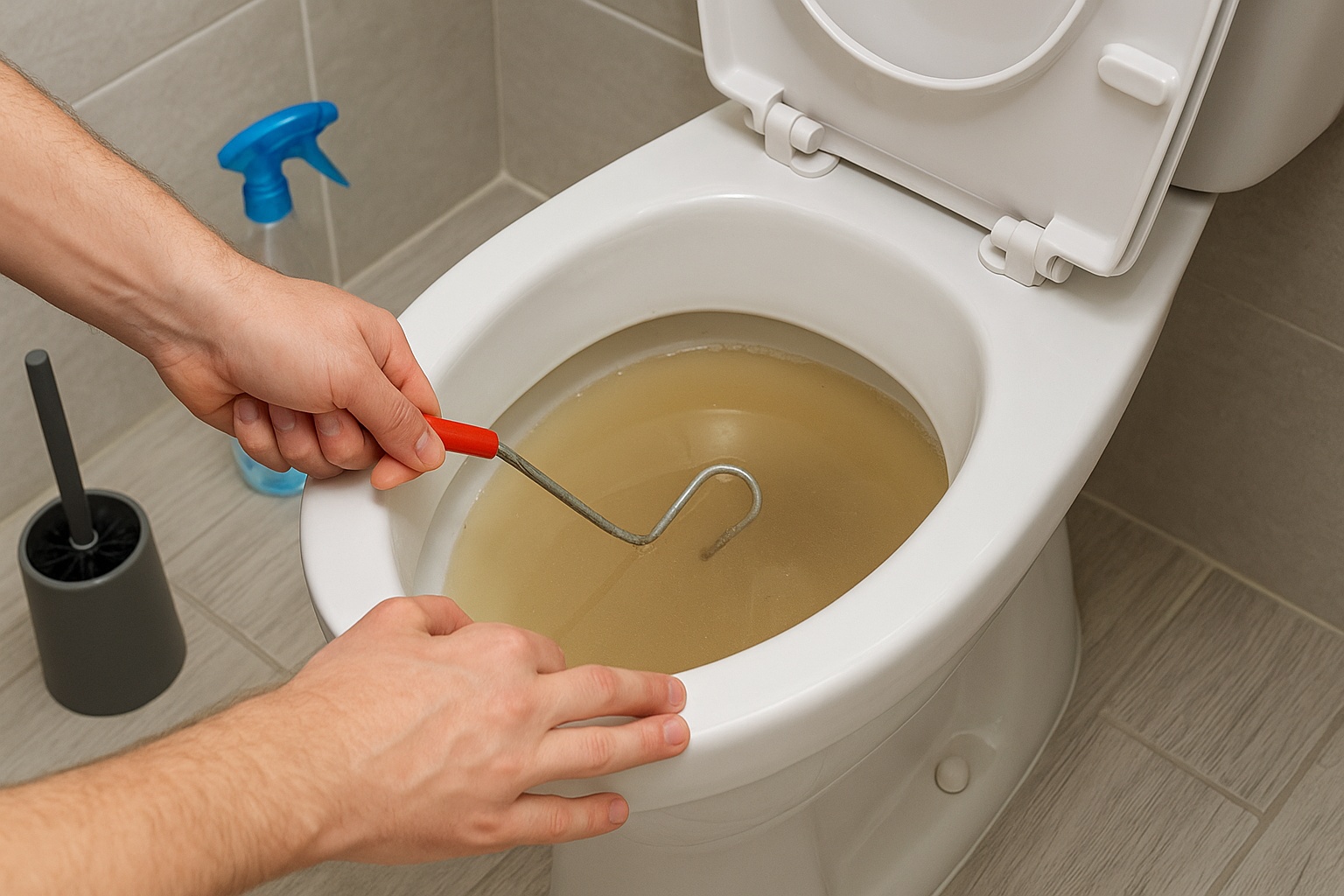You flush the toilet — and suddenly the water starts rising. Panic sets in. Even worse? You don’t have a plunger. Don’t worry — you can still handle this mess without special tools. In this article, you’ll learn five safe and effective ways to unclog a toilet using common household items.
Toilets usually clog because of excess toilet paper, foreign objects, or poor drainage. Common culprits include:
- “Flushable” wipes
- Children’s toys
- Paper towels
- Too much toilet paper
Clogs close to the bowl are often easy to fix yourself, but deeper blockages in the sewer line may require professional help.
This gentle method often works wonders.
- Pour about half a cup of dish soap into the toilet bowl.
- Let it sit for 10–15 minutes.
- Pour in a bucket of hot (not boiling) water from waist height.
The soap lubricates the pipes and breaks down waste, making it easier for the clog to pass through with the next flush.
A natural chemical reaction can work like magic.
- Pour 1 cup of baking soda into the toilet.
- Follow with 1 cup of white vinegar.
- Let the mixture fizz and sit for about 30 minutes.
- Try flushing again.
This eco-friendly trick can help dissolve organic clogs and deodorise your toilet too.
A little pressure goes a long way.
- Dry the toilet rim thoroughly.
- Wrap plastic cling film tightly over the entire seat and bowl top.
- When you flush, the build-up of pressure may help push the clog through the pipes.
It sounds odd — but many DIYers swear by it.
If you’re dealing with a visible or reachable clog:
- Unwind a wire coat hanger and leave a small hook at the end.
- Carefully insert it into the drain to try and dislodge or break apart the blockage.
- Be gentle to avoid scratching the porcelain.
A flexible drain snake is even more effective if you have one available.
This is a powerful but underused option.
- Use a wet/dry vacuum (shop vac) to remove water from the bowl.
- Switch it to suction mode.
- Place the hose into the drain opening, sealing it with a cloth to increase suction.
- Turn on the vacuum to try and pull the clog out.
Note: Never use a regular vacuum for this — only a wet/dry shop vac.
If none of these fixes work, or if your toilet frequently overflows, it’s time to call in a pro. Persistent clogs could mean:
- A blockage deeper in the plumbing
- Tree roots in the sewer line
- A collapsed or damaged pipe
Delaying a fix could lead to costly water damage or health hazards from sewage backup.
You can avoid future toilet headaches by following a few simple rules:
- Never flush wipes, feminine hygiene products, or paper towels
- Limit how much toilet paper you use per flush
- Install a pressure-assisted or high-efficiency toilet
- Teach kids not to flush toys or foreign objects
A bit of prevention goes a long way toward keeping your plumbing problem-free.
No plunger? No problem. These five proven techniques can help you clear most toilet clogs quickly, safely, and without damaging your plumbing. But if the clog persists, don’t hesitate to call in a professional. Knowing when to DIY and when to get help keeps your bathroom — and your budget — in good shape.

